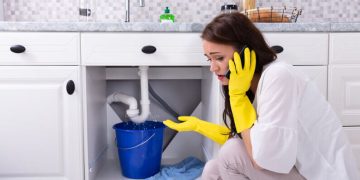When water infiltrates our homes or businesses, it often brings with it a hidden threat: mold. Keeping a healthy home requires an understanding of the connection between mold development and water damage. Let’s explore this connection and learn how to prevent and address these issues effectively.
The Basics of Mold Growth
Mold is a type of fungus that thrives in moist environments. To flourish, mold requires:
- Moisture
- A food source (organic materials like wood, drywall, or fabric)
- Suitable temperature (typically between 60°F and 80°F)
- Oxygen
Given these conditions, mold can begin growing within 24-48 hours after water damage occurs.
How Water Damage Creates Ideal Conditions for Mold
Water damage provides the perfect breeding ground for mold:
- Introduces moisture into building materials
- Increases humidity levels in affected areas
- Can go unnoticed in hidden spaces like wall cavities or under flooring
This is why prompt water damage restoration is vital. Restoration companies in Kansas City understand the urgency of addressing water damage to prevent mold growth.
Common Types of Water Damage Leading to Mold
Several water-related incidents can result in mold growth:
- a) Flooding from natural disasters
- b) Leaky roofs or windows
- c) Burst pipes or plumbing issues
- d) Sewage backups
- e) High humidity levels in poorly ventilated areas
Each scenario can create long-lasting moisture problems if not addressed promptly.
Health Risks Associated with Mold
Mold growth following water damage isn’t just a structural issue; it can also pose health risks:
- Allergic reactions (sneezing, runny nose, red eyes)
- Asthma attacks in people with asthma
- Irritation of the eyes, skin, nose, throat, and lungs
- Potential for more serious reactions in immunocompromised individuals
Identifying Mold Growth After Water Damage
Recognizing mold growth early is key to preventing its spread. Look for:
- Visible mold growth (often appears as discoloration on surfaces)
- Musty odors
- Water stains or discoloration on walls, ceilings, or floors
- Peeling or bubbling paint or wallpaper
- Warping of wood or drywall
The Importance of Professional Assessment
While some mold growth may be visible, much of it can occur in hidden areas. Restoration companies in Kansas City use specialized tools to detect hidden damage:
- Moisture meters to identify water-damaged areas
- Thermal imaging cameras to spot temperature variations indicating moisture
- Thorough visual inspections of affected areas
- Air and surface sampling for mold testing when necessary
Preventing Mold Growth After Water Damage
Preventing mold growth starts with quick and effective water damage restoration:
- a) Remove standing water as soon as possible
- b) Dry affected areas thoroughly within 24-48 hours
- c) Use dehumidifiers to reduce humidity levels
- d) Dispose of water-damaged items that can’t be thoroughly dried
- e) Clean and disinfect affected surfaces
The Mold Remediation Process
If mold growth has occurred, professional remediation is often necessary. The process typically involves:
- Containment of the affected area
- Air filtration to capture mold spores
- Removal of mold-infested materials
- Cleaning of salvageable items
- Drying of the area to prevent future mold growth
- Repairs and restoration of damaged areas
Long-Term Prevention Strategies
To prevent future water damage and mold growth:
- Regularly inspect and maintain your property’s plumbing, roof, and HVAC systems
- Quickly take care of any moisture problems or water leaks
- Ensure proper ventilation in high-humidity areas like bathrooms and kitchens
- In damp environments, use materials that are resistant to mold
- Monitor indoor humidity levels and use dehumidifiers if necessary
When to Call Professionals
While minor water damage might be manageable on your own, certain situations always warrant professional help:
- Large-scale water damage
- Contaminated water (such as sewage backups)
- Visible mold growth covering large areas
- Water damage in hidden spaces (like inside walls)
- Any situation where mold growth is suspected but not visible
Restoration companies in Kansas City have the expertise and equipment needed to address these complex situations effectively.
The Role of Restoration Companies
When it comes to stopping and treating mold growth following water damage, professional repair companies are essential:
- Rapid response to water damage incidents
- Thorough water extraction and drying processes
- Use of industrial-grade dehumidifiers and air movers
- Application of antimicrobial treatments to prevent mold growth
- Comprehensive mold remediation services when needed
Educating Property Owners
Many restoration companies in Kansas City also focus on educating property owners about:
- a) Signs of water damage and mold growth
- b) Proper maintenance to prevent water damage
- c) Immediate steps to take after discovering water damage
- d) The importance of prompt professional intervention
Maintaining a healthy living or working environment requires an understanding of the relationship between water damage and mold development. Mold development may be considerably decreased in your property by taking prompt action to remove water damage and by putting preventive measures in place. Remember, when in doubt, it’s always best to consult with professionals who can assess the situation and provide tailored solutions to protect your property and health. With the right knowledge and prompt action, you can keep your space dry, clean, and mold-free.


















